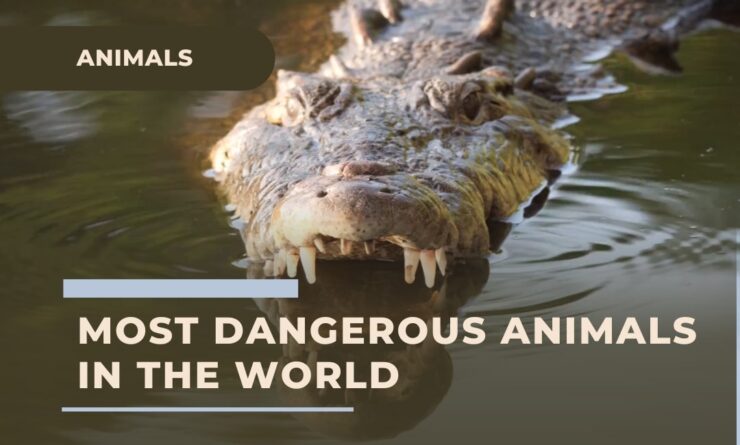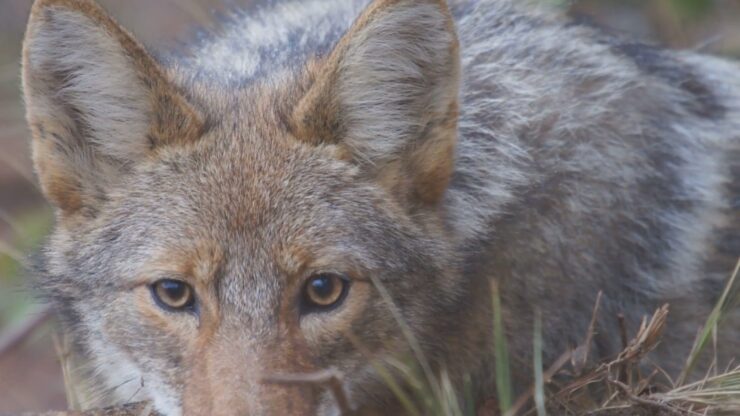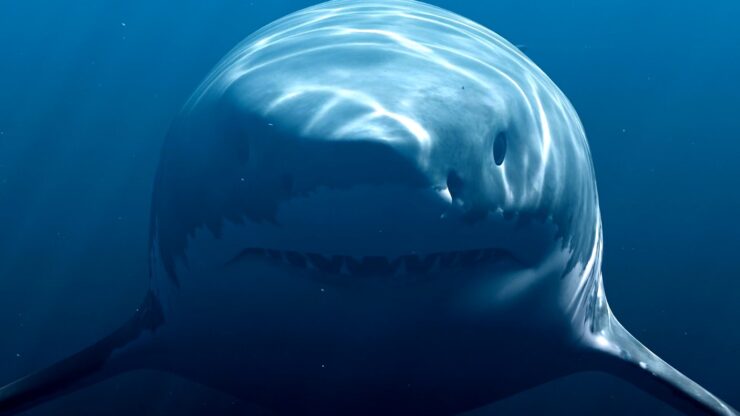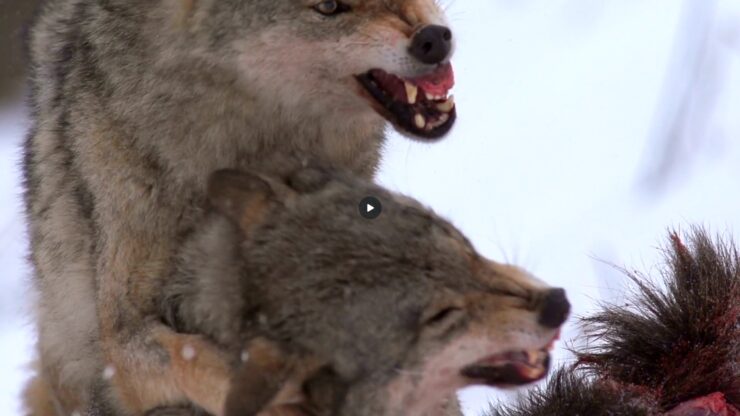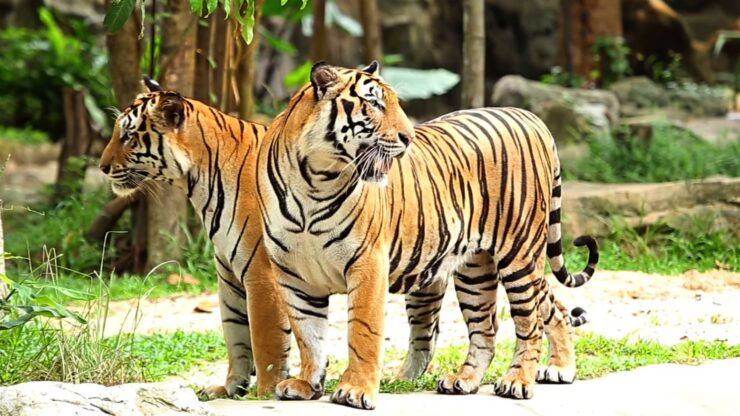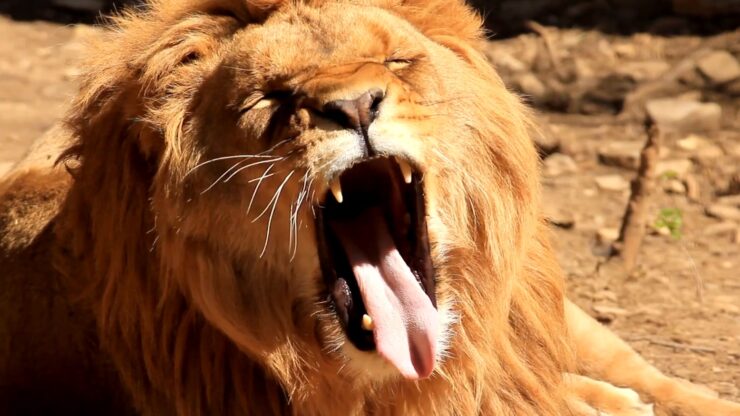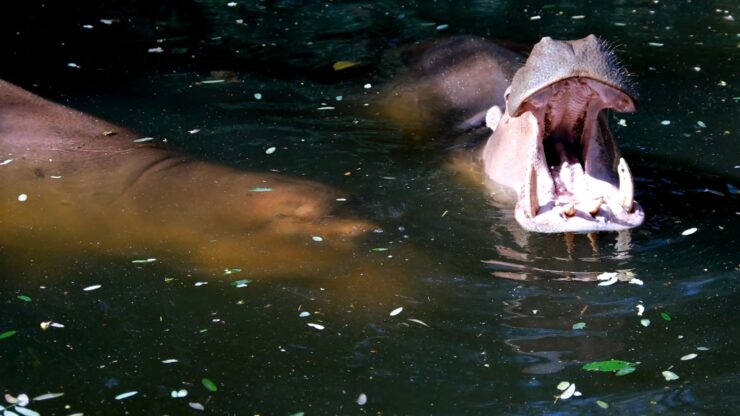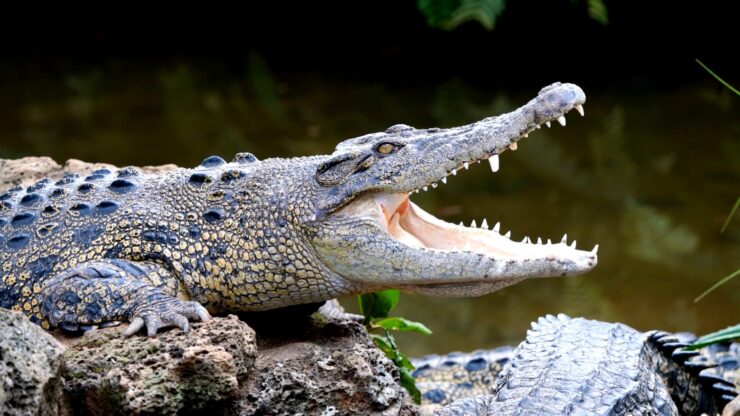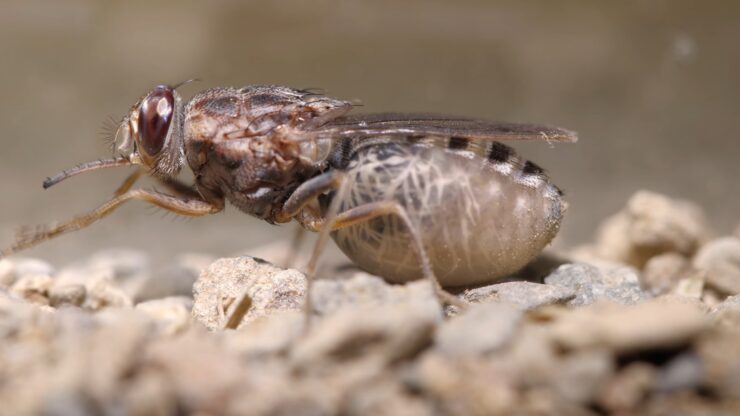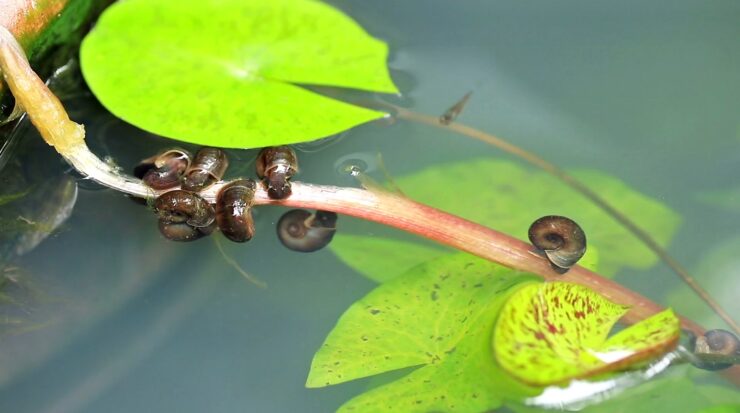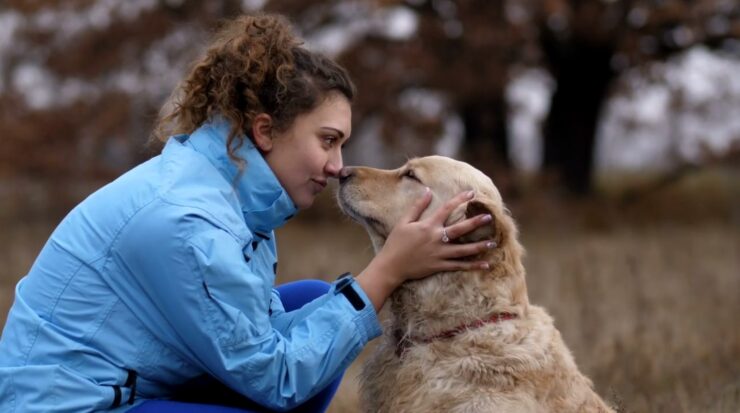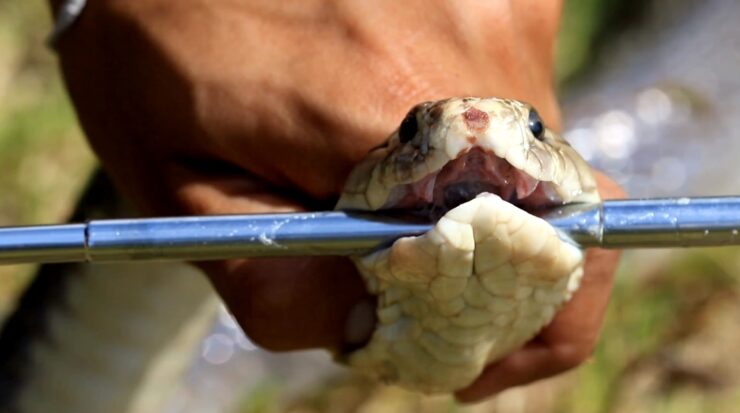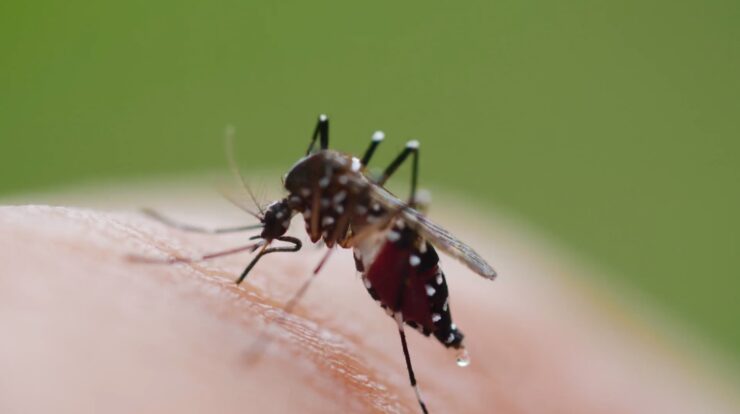Hello, fellow explorers! Today, I invite you to join me on a journey that’s as intriguing as it is intimidating. We’re going to explore the world of the most dangerous animals on Earth. As someone who has always been fascinated by the animal kingdom, I can’t wait to share this adventure with you.
I’ve always been captivated by the sheer diversity and complexity of the animal kingdom. But today, we’re not just looking at any animals. We’re focusing on the ones that pose the greatest threat to us humans.
| Animal | 💀 Average Number of Deaths per Year 💀 |
| Sharks 🦈 | 6 |
| Wolves 🐺 | 10 |
| Jellyfish 🎐 | 40 |
| Tigers 🐅 | 50 |
| Bees 🐝 | 60 |
| Lions 🦁 | 100 |
| Elephants 🐘 | 100 |
| Hippopotamuses 🦛 | 500 |
| Crocodiles 🐊 | 1,000 |
| Tapeworms | 1,600 |
| Ascaris Roundworms | 2,700 |
| Tsetse Flies | 3,500 |
| Scorpions 🦂 | 3,500 |
| Freshwater Snails 🐌 | 4,400 |
| Kissing Bugs | 8,000 |
| Dogs 🐶 | 17,400 |
| Sandfly | 24,200 |
| Snakes 🐍 | 60,000 |
| Humans 👤 | 580,000 |
| Mosquitoes 🦟 | 830,000 |
What Is Classified as ‘Dangerous?’
First, let us establish the criteria for danger. In respect of this article, we will attribute danger to how likely the animal is to cause death. We have 3 criteria for this:
- Physical Harm: Some dangerous animals, such as venomous snakes and certain species of scorpions, can cause immediate physical harm through bites or stings. The venom or physical damage inflicted can lead to pain, illness, or even death.
- Disease Transmission: Other animals, like mosquitoes, sandflies, and tsetse flies, are considered dangerous due to their role as vectors for serious diseases. These diseases, such as malaria, sleeping sickness, or Leishmaniasis, can lead to significant health complications and fatalities, particularly in regions where medical care is limited.
- Indirect Threats: Some animals may be perceived as dangerous due to their indirect effects on human health or the environment. For example, Ascaris roundworms cause health issues through parasitic infection, while humans themselves pose a danger through violence.
So, are you ready to step into the ‘Danger Zone’? Remember, this isn’t about fear-mongering, but about understanding these creatures better. After all, coexistence is the key to our survival on this shared planet.
Deadliest Animals
Deadly or Misunderstood (0 – 100 Kills Per Year)
The first creatures on our list are Misunderstood Killers. They have long loomed large in our collective nightmares, often portrayed in the media as relentless killers.
Yet, reality tells a different story, one that paints these animals as much more nuanced and less threatening than they are often perceived. Each responsible for fewer than 100 deaths per year, these misunderstood killers are more likely to be victims themselves – of habitat loss, human fear, and misunderstanding.
While caution and respect are certainly warranted in our interactions with these species, a deeper knowledge and appreciation of their roles in the ecosystem can help dispel unwarranted fears and foster a more harmonious coexistence.
20. Sharks 🦈
The apex predators of the ocean are often misunderstood due to their portrayal in popular culture. These magnificent creatures have been around for over 400 million years, predating even the dinosaurs. They play a crucial role in maintaining the balance of marine ecosystems.
Sharks are not the mindless killers that they are often portrayed to be. In fact, they only kill about 6 people per year. Shark attacks are not that often. On the contrary, humans kill up to 100 million sharks annually, primarily for their fins.
Fun Fact: Did you know that sharks have an extraordinary sense of smell? They can detect a single drop of blood in an Olympic-sized pool! This, along with their excellent hearing, allows them to locate prey from miles away.
19. Wolves 🐺
Wolves, the largest members of the Canidae family, are known for their social structure and pack mentality. They are highly intelligent and communicative animals, using a combination of howls, body language, and scent marking to convey messages to each other.
Despite their reputation, wolves rarely attack humans. Most human-wolf conflicts arise when wolves are provoked or feel threatened. Wolves play a vital role in maintaining the health of
Interesting fact: Wolves have over 200 million scent cells and can hear up to six miles away in the forest. They also mate for life, forming strong social bonds with their pack.
18. Jellyfish 🎐
Jellyfish, the oldest multi-organ animal, have been floating in the world’s oceans for at least 600 million years. These beautiful creatures come in a variety of shapes and sizes, from tiny ones that are barely visible to the naked eye, to large ones with tentacles that stretch several feet.
Jellyfish stings can be painful and, in some cases, deadly. However, most species are harmless to humans. They play an important role in the ocean’s food chain, serving as a source of food for a variety of marine animals.
Fun Fact: Some jellyfish are bioluminescent, meaning they can emit light. This light emission, typically activated by touch, serves to startle predators. Also, there’s a species of jellyfish known as the immortal jellyfish (Turritopsis dohrnii) that is biologically immortal!
17. Tigers 🐅
The tiger, the largest species among the Felidae and classified as a member of the genus Panthera, is an apex predator, primarily preying on ungulates such as deer and bovids. They are territorial and generally solitary but social animals, often requiring large contiguous areas of habitat that support their prey requirements. This, coupled with the fact that they are indigenous to some of the more densely populated places on Earth, has caused significant conflicts with humans.
Tigers are among the most recognisable and popular of the world’s charismatic animals. They have featured prominently in ancient mythology and folklore and continue to be depicted in modern films and literature. Tigers appear on many flags, coats of arms, and as mascots for sporting teams. The tiger is the national animal of several Asian nations, including India.
Interesting fact: no two tigers have the same stripes. Like human fingerprints, their stripe patterns are unique to each individual. Stripes range in color from light brown to black and are not symmetrical on both sides of the tiger.
16. Bees 🐝
Bees are flying insects closely related to wasps and ants, known for their role in pollination and, in the case of the best-known bee species, the western honey bee, for producing honey. Bees are a monophyletic lineage within the superfamily Apoidea. They are presently considered a clade, called Anthophila. There are over 16,000 known species of bees in seven recognized biological families.
Bees play an indispensable role in pollinating the flowers of many of the fruits, nuts, and vegetables we eat. In fact, it’s estimated that one-third of the human food supply depends on insect pollination, most of which is accomplished by bees.
Fun fact: they are capable of recognizing human faces. In a study, honeybees were shown pictures of human faces and then were rewarded with sugar water when they flew toward the picture. The bees remembered and recognized the faces they were shown, a skill useful for remembering which flowers have nectar, they also remember where their house is.
Untamed Savanah (100 – 1,000 Kills Per Year)
The animals that call the Savannah their home are synonymous with the untamed wild, revered for their power, grace, and complexity. Yet, despite their awe-inspiring presence, they find themselves responsible for an estimated 100 to 1000 deaths per year.
These numbers may conjure images of unchecked aggression, but a closer look reveals creatures that are more misunderstood than malevolent. Human encroachment on their habitats and increased human-animal interactions have inevitably led to conflicts, but labeling these majestic beings as violent oversimplifies a complex issue.
Recognizing these facets of their existence allows us to shift our focus from fear to understanding, respect, and responsible cohabitation. Our world is enriched by the presence of these gentle giants, and a commitment to conservation, empathy, and education will ensure that they continue to inspire awe and curiosity for generations to come.
15. Lions 🦁
The lion is the second species in the family Felidae and a member of the genus Panthera, to appear on this list, and commonly known as “The King of the Jungle”. With their muscular, deep-chested body, short, rounded head, round ears, and a hairy tuft at the end of its tail.
They are sexually dimorphic; adult male lions have a prominent mane. With a typical head-to-body length of 184–208 cm they are larger than females at 160–184 cm. It is a social species, forming groups called prides. A lion pride consists of a few adult males, related females and cubs.
Lions are apex and keystone predators; although some lions scavenge when opportunities occur and have been known to hunt humans, the species typically does not. Typically, the lion inhabits grasslands and savannas, but is absent in dense forests. It is usually more diurnal than other big cats, but when persecuted, it adapts to being active at night and at twilight.
Interesting fact: Alion’s roar can be heard from as far as 5 miles away. A lion’s roar is not just fearsome, but it’s also a way of communicating. A roar can help a lost member of the pride find the group.
14. Elephants 🐘
The elephant, a symbol of majesty and strength, is a creature that commands respect. Found in the diverse landscapes of sub-Saharan Africa and South Asia, these herbivores are known for their intelligence and strong social bonds. Their diet is as large as their size, consuming up to 300 pounds of food daily, including roots, grasses, fruit, and bark.
However, their peaceful demeanor can quickly change when they feel threatened. Elephants are known to charge at perceived threats, and with their size and strength, they can cause significant damage. This is especially true for male elephants in musth, a periodic condition in bull (male) elephants, characterized by highly aggressive behavior.
Did you know? Elephants have the longest gestation period of any mammal, almost 22 months. Also, the pattern of wrinkles on an elephant’s skin is unique to each individual, much like human fingerprints.
13. Hippopotamuses 🦛
The hippopotamus, a resident of sub-Saharan Africa, is a creature of contrasts. Despite their size and slow movements, they are one of Africa’s most dangerous animals. They are highly territorial and can become extremely aggressive, especially if they feel threatened.
Hippos are known to charge at intruders, both in water and on land, with surprising speed for their size. Their enormous teeth and powerful jaws are capable of crushing a small boat, making them a significant threat in their native habitats.
Fun Fact: Despite their aquatic lifestyle, hippos can’t swim. They are so dense that they sink and walk along the bottom of bodies of water rather than float. They can hold their breath for about five minutes underwater.
The Unseen Peril (1,000 – 10,000 Kills Per Year)
This club encompasses a diverse group of animals, some of which are a part of our everyday environment, yet others that remain mysterious and alien. At a glance, the grouping may seem incongruous, but they share a common thread: many of their dangers lie hidden, often manifesting in insidious ways.
Crocodiles, the most conspicuous members of this group, are known for their lethal force. However, the other members manifest their danger through disease and parasitic infections.
These animals also underscore the intricate relationship between health, environment, and human activity. The threats they pose are often exacerbated by poverty, lack of sanitation, and encroachment on natural habitats. Understanding these dangers requires more than just awareness; it calls for a holistic view of our place within the ecosystem and a willingness to take proactive measures to coexist with these creatures responsibly.
12. Crocodiles 🐊
Crocodiles, the ancient predators of the tropics, are known for their strength, agility, and ferocious hunting skills. They are carnivores, feasting on a diet of fish, birds, frogs, and crustaceans. However, they are not averse to larger prey such as zebras and wildebeest.
Crocodiles are ambush predators, waiting patiently for their prey to come within reach before launching a swift and deadly attack. They are capable of taking down a variety of prey, from small fish to large mammals. Human encounters with crocodiles can be deadly, especially if the crocodile feels threatened or is protecting its nest.
Interesting Fact: Crocodiles have the strongest bite of any animal in the world. The saltwater crocodile can exert a force of 3,700 pounds per square inch (psi). However, the muscles that open the crocodile’s mouth are relatively weak, so weak that a human could hold them shut.
11. Tapeworms 🐛
Tapeworms are a type of parasitic worm that can live in the intestines of humans and animals. They are usually ingested through undercooked or raw meat that is infected with the parasite. Once inside the host, they latch onto the walls of the intestines and absorb nutrients, growing larger over time. Some species of tapeworm can grow up to 30 feet long!
Tapeworms are not just a nuisance; they can cause serious health problems. They can lead to malnutrition, as they absorb the nutrients that the host needs. In some cases, they can also cause cysticercosis, a disease that can lead to seizures, muscle weakness, and vision problems.
Despite their harmful effects, tapeworms have an interesting life cycle. They lay eggs in the intestines of their host, which are then excreted in the feces. If these eggs are ingested by another host, the cycle begins anew.
Fun Fact: Did you know that some people intentionally ingest tapeworms as a misguided method of weight loss? This is extremely dangerous and not recommended.
10. Ascaris Roundworms 🐛
Ascaris roundworms are a type of parasitic worm that primarily live in the small intestine. They are the most common human worm infection, with the larvae and adult worms causing intestinal disease. Infection occurs worldwide in warm and humid climates, where sanitation and hygiene are poor.
Infection with Ascaris often shows no symptoms. However, heavy infections can cause intestinal blockage and impair growth in children. Other symptoms such as cough are due to migration of the worms through the body.
Ascaris roundworms have a life cycle similar to Tapeworms. The eggs of the worm are passed in the feces of infected persons. If the feces are used as fertilizer or defecated outside, the eggs are deposited on the soil. They can then mature into a form that is infective. Ascariasis is caused by ingesting these infective eggs.
Fun Fact: Ascaris roundworms can live in the human body for 1-2 years and a female can lay up to 200,000 eggs per day!
9. Tsetse Flies 🪰
Tsetse flies are large biting flies that live in the tropical regions of Africa. They are known for transmitting a disease called African trypanosomiasis, also known as sleeping sickness. This disease is caused by the parasite Trypanosoma brucei, which is carried by the tsetse fly.
Sleeping sickness is a serious illness that is eventually fatal if not treated. Symptoms usually occur within 1 to 3 weeks after an infective bite and include fever, severe headaches, irritability, extreme fatigue, swollen lymph nodes, and aching muscles and joints. Some people develop a skin rash. Progressive confusion, personality changes, and other neurologic problems occur after infection has invaded the central nervous system.
Despite their dangerous reputation, tsetse flies play a crucial role in the ecosystem. They are a major pollinator of wild plants and serve as a food source for other animals.
Did you Know? Tsetse flies are attracted to moving vehicles and bright colors. So, if you ever find yourself in rural Africa, it might be best to avoid wearing bright clothing!
8. Scorpions 🦂
Scorpions are ancient creatures that have been around for hundreds of millions of years. They are found on every continent except Antarctica, and they have adapted to a wide range of environments, from deserts to rainforests. Scorpions are nocturnal hunters, using their pincers to catch prey and their venomous stinger to paralyze it. While most scorpions are harmless to humans, a few species, such as the Arizona bark scorpion, can be deadly.
Scorpions are often feared due to their venomous sting. However, out of the 2,000 species of scorpions, only about 30 to 40 species have venom that is dangerous to humans. Most scorpions use their venom to paralyze or kill their prey. When a scorpion stings a human, it is usually because it feels threatened. The sting can cause a range of reactions, from a mild swelling to severe pain, and in rare cases, can be fatal.
Despite their fearsome reputation, scorpions play an important role in the ecosystem. They help control the population of pests like insects and spiders. In some cultures, scorpions are also used in traditional medicine. For instance, scorpion venom is used in research and has been found to contain compounds that could help treat heart disease and cancer. Fun fact: Scorpions glow under ultraviolet light, a feature that scientists believe may help them find mates or confuse predators.
7. Freshwater Snails 🐌
Freshwater snails are found in a variety of habitats ranging from small puddles to large lakes. They play a crucial role in maintaining the health of aquatic ecosystems by helping to recycle nutrients and providing food for various animals. However, some species of freshwater snails are carriers of a deadly disease known as schistosomiasis.
Schistosomiasis, also known as bilharzia, is caused by parasitic worms that use freshwater snails as an intermediate host. Humans can get infected when their skin comes into contact with water contaminated by the parasite. The disease is prevalent in tropical and subtropical regions, particularly in poor communities without access to safe drinking water and sanitation. It can cause a range of symptoms, from fever and muscle aches to serious damage to organs like the liver and bladder.
Efforts to control schistosomiasis often involve reducing the population of the snails that host the parasite. However, these measures need to be balanced with the need to preserve biodiversity and the role that these snails play in the ecosystem.
Fun fact: Freshwater snails have a wide variety of shell shapes and colors, and some species are popular in the aquarium trade.
6. Kissing Bugs 🪳
Kissing bugs, also known as triatomine bugs, are a group of insects found in the Americas. They are named for their habit of biting humans on the face, particularly around the lips. Kissing bugs are nocturnal and feed on the blood of mammals, including humans. They are most infamous for their role in transmitting Chagas disease.
Chagas disease is caused by the Trypanosoma cruzi parasite, which the kissing bug carries. The bug becomes infected by biting an infected animal or person. When the kissing bug bites a human and feeds on their blood, it defecates on the person. The parasite can enter the body if the feces are accidentally rubbed into the bite wound or into a mucous membrane, such as the eye or mouth.
Chagas disease is a major public health concern in many parts of Latin America, and it is also found in the United States. The disease can cause a range of symptoms, from mild to severe, and can lead to serious cardiac and gastrointestinal complications if left untreated.
Fun fact: Despite their dangerous reputation, kissing bugs play a role in the ecosystem by controlling the population of other insects.
The Silent Threat (10,000 – 100,000 Kills Per Year)
This club brings us face to face with creatures that are all too familiar. While each has its unique characteristics, they share a disconcerting ability to pose significant threats in situations where we might least expect them.
From the misunderstood bite of mans best friend, to the hidden bite venomous bite in the wildernessdiseases, and finally the danger of disease. The members of this club challenge our perceptions and force us to confront the fact that danger can lurk in the most ordinary and unexpected places.
Whether it’s the pet in our home, the insects in our gardens, or the wildlife in our surroundings, awareness, respect, and responsible coexistence are key to navigating these potential hazards. These animals serve as a reminder that vigilance, education, and empathy can transform potential threats into harmonious cohabitation.
5. Dogs 🐶
Dogs, often referred to as man’s best friend, are surprisingly one of the most dangerous animals to humans. This is primarily due to the sheer number of dogs worldwide and their close proximity to people. Dogs are responsible for millions of bite incidents each year, some of which result in fatalities.
Most dog attacks occur because the dog feels threatened, is protecting its territory, or is poorly trained and socialized. It’s important to remember that any dog, regardless of breed, can become aggressive under certain circumstances. However, certain breeds are often more associated with attacks, including Pit Bulls and Rottweilers.
Despite these statistics, dogs continue to be beloved pets and companions for many people around the world. Responsible ownership, including proper training and socialization, can greatly reduce the risk of dog attacks.
Interesting Fact: Did you know that there are over 340 different dog breeds worldwide recognized by various kennel clubs?
4. Sandfly 🪰
The sandfly, a tiny insect found in tropical regions, is another surprisingly dangerous creature. It is the primary vector for a disease called Leishmaniasis, which affects millions of people worldwide.
Leishmaniasis is a parasitic disease that can cause a range of symptoms, from skin ulcers to severe organ damage. It’s a significant public health problem in many parts of the world, particularly in poorer communities with limited access to medical care.
Despite their small size, sandflies have a significant impact on human health. Efforts to control sandfly populations and develop effective treatments for Leishmaniasis are ongoing.
Fun Fact: Only the female sandfly bites humans as they require blood for the development of their eggs.
3. Snakes 🐍
Snakes are one of the most feared creatures on the planet, and for a good reason. They are responsible for a significant number of human deaths each year, primarily due to venomous bites. However, it’s important to note that not all snakes are venomous, and even those that are often pose little threat to humans unless provoked.
Snake bites often occur when humans accidentally step on or near a snake, causing it to defend itself. Some of the most venomous snakes include the Saw-Scaled Viper and the King Cobra. However, the risk of being bitten by a snake is relatively low in most parts of the world.
Despite their dangerous reputation, snakes play a crucial role in our ecosystem by controlling rodent populations. They are also revered in many cultures and are often associated with various symbolic meanings.
Did you know? Snakes can control the amount of venom they inject and may bite aggressively for food or defensively for protection?
Natures Ultimate Perils (100,000+ Kills Per Year)
The pinnacle of danger in our analysis comes from two vastly different sources, yet their impact on humanity is both profound and terrifying. In this category, we find an unsettling juxtaposition: one species that embodies intelligence, creativity, and complexity, and another that is an unassuming but relentless carrier of death.
One reminds us of our own capacity for violence, destruction, and self-inflicted harm, casting a shadow over our achievements and reflecting our darker tendencies. The other, a seemingly insignificant insect, proves that size and simplicity can belie a tremendous power to devastate populations through disease.
Together, these two forces represent a complex and multifaceted threat to human life, challenging our perceptions of danger and demanding a response that blends introspection, innovation, responsibility, and global cooperation. Their place at the top of this grim hierarchy is a sobering reminder of the fragility of life and the interconnectedness of our world.
2. Humans 👤
The expected Danger, surprisingly, are only the second deadliest animal on the planet. The danger we pose are through a miriad of actions. In respect of this article, we focus only on wars and homicides, but indirectly we are massively destructuve to one another also through pollution, and destruction of natural habitats.
According to the United Nations Office on Drugs and Crime, there were an estimated 464,000 deaths in 2017 due to homicides. This equates to a global average rate of 6.1 victims per 100,000 population.
In addition, it’s important to note that about 90% of all homicides recorded worldwide were committed by male perpetrators, and men make up almost 80% of all homicide victims recorded worldwide.
The Paradox: Despite being the “most intelligent” species on the planet, we are also one of the most destructive. The only surprising thing about humans being on this list is that we aren’t number one.
1. Mosquitoes 🦟
Mosquitoes, the tiny creatures that are often just a nuisance to many, are actually the deadliest animals on Earth. They are responsible for millions of deaths every year due to the diseases they transmit, such as malaria, dengue fever, Zika virus, and yellow fever.
In 2021, there were an estimated 247 million cases of malaria worldwide, with an estimated number of malaria deaths standing at 619,000. The WHO African Region carries a disproportionately high share of the global malaria burden, with 95% of malaria cases and 96% of malaria deaths.
Despite being the deadliest, mosquitoes are also one of the few animals on this list whose deadly impact can be significantly reduced. Simple measures like using mosquito nets, wearing protective clothing, and using insect repellent can drastically reduce the risk of mosquito-borne diseases.
Fun Fact: Did you know that mosquitoes have been on Earth for more than 100 million years? They’re known from as far back as the Cretaceous period – 145-66 million years ago.
FAQs
What is the most likely cause of death from an animal?
The most likely cause of death from an animal is disease transmission, particularly from mosquitoes, which are responsible for millions of deaths every year through the spread of diseases like malaria, dengue fever, and yellow fever.
What is the most likely animal to kill through physical harm?
Snakes are among the most likely animals to kill through physical harm, especially venomous species that can deliver fatal bites.
What animals are most likely to attack you in the wild?
In the wild, venomous snakes and scorpions are some of the animals that may attack if they feel threatened. Large predators such as big cats might also pose a threat if provoked or cornered.
Are cows more dangerous than sharks?
Statistics show that cows (22) cause more deaths than sharks (6), typically through accidents rather than aggressive behavior. This can be attributed to the close proximity of humans to cows, especially in farming contexts.
How can I protect myself from mosquito-borne diseases?
Simple measures like using mosquito nets, wearing protective clothing, and applying insect repellent can drastically reduce the risk of mosquito-borne diseases.
Are all scorpions and snakes lethal to humans?
No, out of the 2,000 species of scorpions, only 30 to 40 are dangerous to humans. Similarly, not all snakes are venomous, and among those that are, many pose little threat to humans unless provoked.
How are efforts being made to control diseases like schistosomiasis and Leishmaniasis?
Efforts typically include reducing the population of the host animals like freshwater snails for schistosomiasis and controlling sandfly populations for Leishmaniasis, along with medical treatments and public health initiatives.
Are there beneficial aspects to some of these dangerous animals?
Yes, many dangerous animals play crucial roles in the ecosystem, such as controlling pest populations. Some, like scorpions, are also used in research for medical treatments.
What makes human beings the second deadliest animal?
Humans are considered highly dangerous due to actions like wars, homicides, pollution, and habitat destruction. These actions cause significant harm to both other humans and the environment.
Why are dogs considered dangerous when they are common pets?
Dogs are considered dangerous mainly due to the sheer number of them and their close proximity to people, leading to millions of bite incidents each year. Responsible ownership and proper training can greatly reduce this risk.
Conclusion
In examining the myriad ways that animals can pose dangers to humans, we uncover a complex tapestry that reaches beyond the sensationalized accounts of shark attacks or big cat encounters.
From the tiny mosquito, whose disease-carrying capacity claims millions of lives, to the misunderstood nature of cows and domestic dogs, the threats are diverse and often unexpected. However, this information should not instill fear, but rather a respect and understanding of the creatures we share our world with.
The apex of this examination unveils a sobering reality: the deadliest forces are those closest to us – humans and the unassuming mosquito. The former represents a complex and disconcerting mirror reflecting our propensity for violence and destruction, while the latter symbolizes the relentless nature of disease and its capacity to devastate.
The article highlights that awareness, precaution, and responsible behavior often serve as effective barriers against potential threats. Whether it’s the venomous bite of a snake or the indirect harm caused by human actions, education and responsible interaction form the frontline defense.
Embracing these principles allows us to coexist with even the most dangerous animals, appreciating their essential roles in the ecosystem, and utilizing them for potential benefits in research and medicine. Our relationship with these creatures, whether fraught with peril or filled with wonder, reflects a delicate balance that we continue to navigate in our ever-interconnected world.

